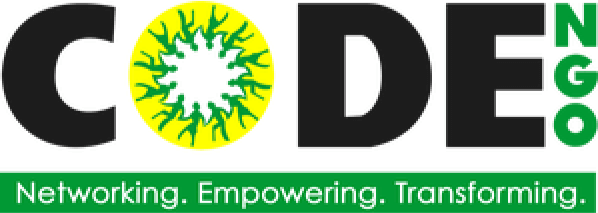
In 2018, CODE-NGO formed 10 regional coordination hubs for disaster risk reduction and management (DRRM), convened by CODE-NGO member networks, to coordinate emergency disaster response, facilitate learning exchange for DRRM, and influence DRRM policy at the national and local levels.
Most of these regional hubs were active since then, but the COVID-19 pandemic disrupted plans to further strengthen them. After two years, the hub convenors finally met last July 2022 to give updates on their hubs’ recent emergency response activities and status of its governance structure.
Present were: Cristina Segnaken-Aban (Cordillera Region); Benedict Balderrama (MIMAROPA Region); Jesica Capricho, Allan Osea, and Tin Mendina (Bicol Region); Emmanuel Areno (Western Visayas Region; Lenbi Laborte (Central Visayas Region); Agnes Bolanos (Zamboanga and Northern Mindanao Regions); Raizsa Mae Anayatin (Davao and CARAGA Regions); Deanie Lyn Ocampo and Milet Aquino (CODE-NGO).
Highlights of the Session
Mr. Osea (Bicol) shared that the pandemic reinforced the imperative to include DRRM and Climate Change Adaptation (CCA) in the strategic planning of organizations. Pandemics and infectious diseases should be treated as disaster risks. Given the current health crises, he also saw the importance of including medical professionals in local disaster planning mechanisms.
Different governance structures of the hubs are anchored on local community contexts. The Cordillera Region, for example, focuses more on disaster rehabilitation than emergency response. Barangay DRRM hub teams have been formed in Mountain Province and Benguet. The archipelagic MIMAROPA Region finds hub coordination work more effective at the provincial level – the Calamianes group of islands in Palawan, Mindoro, and Romblon where a core group had been recently formed. Other active provinces are Iloilo, Antique, Cebu, and Bohol in the Visayas.
In Mindanao, most emergency response activities were organized by Amping CARAGA, the regional hub’s name, given that the region sits in the Eastern seaboard where the majority of typhoons/cyclones enter the Philippine area of responsibility. There are focal organizations in different provinces of the island that help coordinate in times of disasters, but efforts are not yet structured and networked as hubs.
Hub coordination is definitely constrained when organizations have internal problems.
Mr. Balderrama emphasized that the regional hub convenors could very well include CODE-NGO’s advocacy for a Localization Agenda in their efforts. Insightfully, CODE-NGO and its member networks can serve as backbone for emergency response and DRRM advocacy by strengthening the hubs. It has been observed that local CSOs are capable of acting and coordinating even with limited external funding. The hubs can demonstrate inter-regional solidarity for local resource generation for disaster response, recovery, and rehabilitation.
Immediate Next Steps
CODE-NGO will strengthen its regional DRRM Coordination Hubs through more learning exchanges, rebuilding capacities, improving structures and systems, expanding the pool of focal persons and assisting focal organizations, partnerships with other stakeholders (private sector, academe, media) for DRRM-CCA, lobbying with local DRRM councils, and pursuing the advocacy of localization of humanitarian response. Indeed, it takes a village – and more importantly, local villages – to respond to natural and man-made calamities with a bayanihan spirit.

You must be logged in to post a comment.